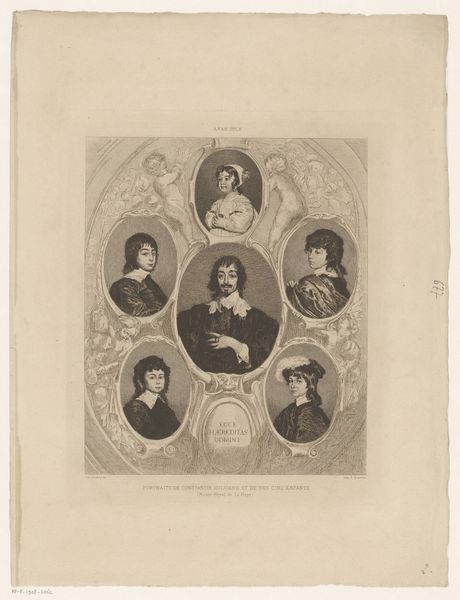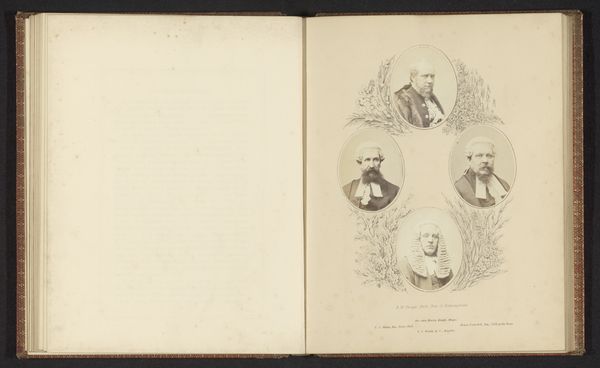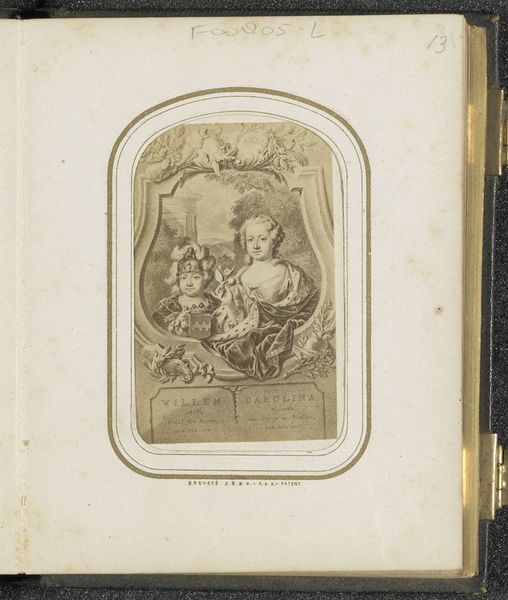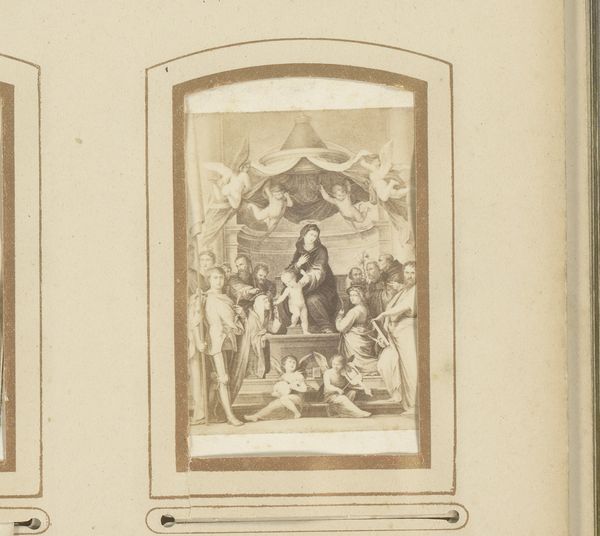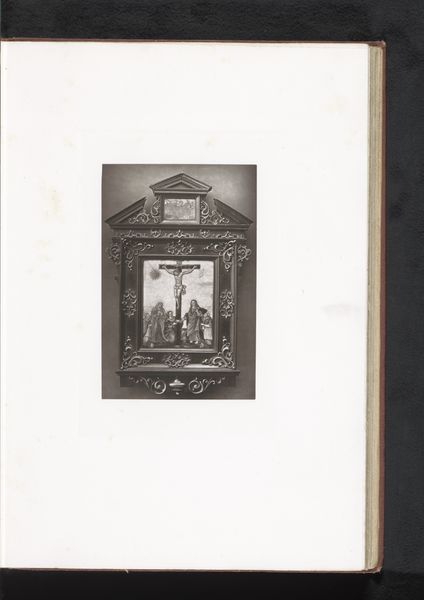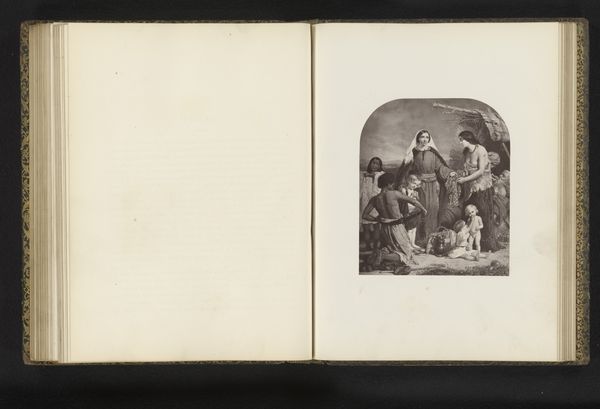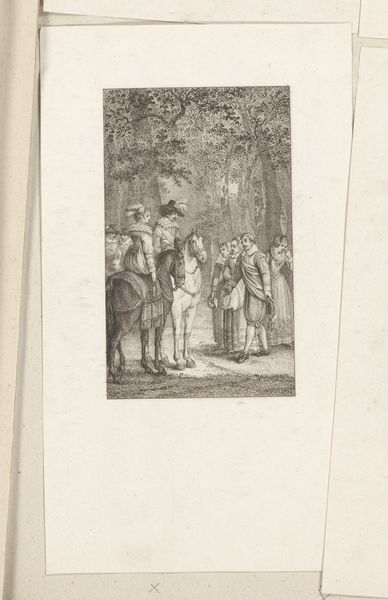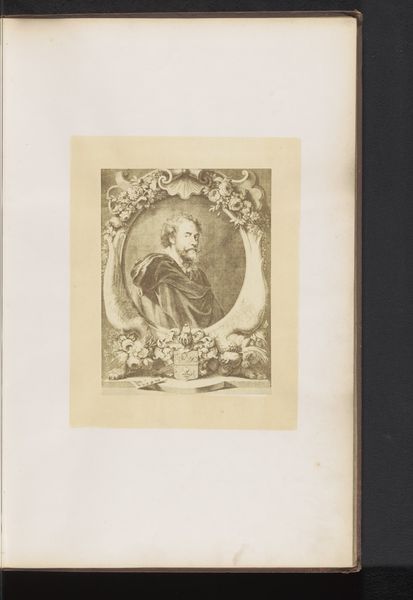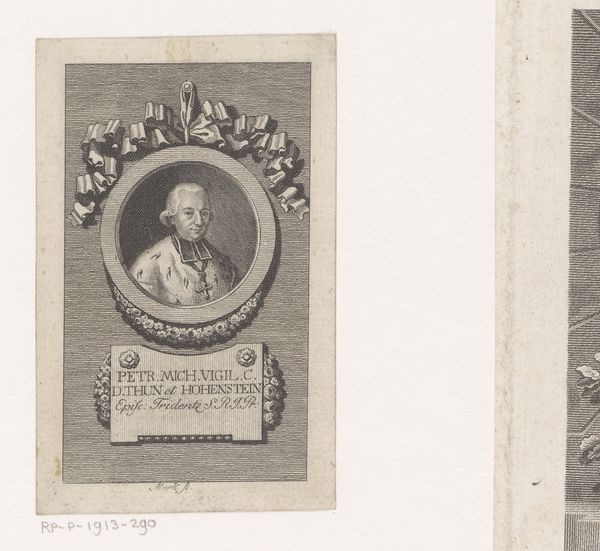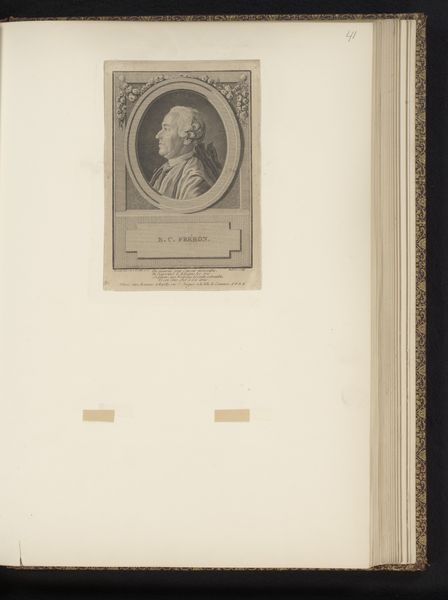
Portretten van Constantijn Huygens en zijn vijf kinderen 1817 - 1818
0:00
0:00
Dimensions: height 230 mm, width 145 mm, height 259 mm, width 160 mm
Copyright: Rijks Museum: Open Domain
Curator: Here we have Pieter van der Meulen's engraving, "Portraits of Constantijn Huygens and His Five Children," dating from between 1817 and 1818, currently held at the Rijksmuseum. Editor: What a serious bunch! Though surrounded by ornate details, the starkness of the medium emphasizes formality. I can almost smell the beeswax candles. Curator: The print medium here is crucial. Consider how engravings facilitated wider distribution, allowing a middle-class family to project its status, to become part of visual culture and social discourse through this kind of commissioning and exchange. Editor: Status, yes, but also a hint of wistful observation from the sitters. I find myself wondering, did the kids fidget terribly while posing, longing to be outside instead of immortalized in serious formality? And this format: family as orbiting celestial bodies. Curator: Indeed! That arrangement echoes the Baroque and classical influences typical of academic art, where lineage and legacy are deliberately framed within historical tropes, consciously constructing its own visual history for later consumption and, more specifically, for conspicuous consumption. Editor: There is also an intriguing blank oval at the bottom, perhaps anticipating the arrival of another child or a partner. It adds a subtle, uncanny sense of the incomplete to what would otherwise be pure stoicism. Or a premonition? I’m reading way too much into it... Curator: That reading highlights how even seemingly straightforward portraiture engages with larger cultural narratives. The blank oval underscores the commodification of family, reproduction as a tangible future but this space hints to the uncertain place of women and how families secure wealth through time and alliances. Editor: Exactly! It takes one simple compositional choice to completely upend an entire narrative. In that quiet space, an absent character haunts the picture; the print suddenly starts talking to you about hidden elements. Curator: Thinking about the physical production—the paper, the ink, the labor involved in creating and disseminating these prints—illuminates how artistic choices become entangled with social meanings. It reminds me how artworks mediate the complex intersections between intention, interpretation, and the everyday contexts where they are circulated and displayed. Editor: I'll never look at a Baroque family portrait the same way again. Sobering yet intriguing.
Comments
No comments
Be the first to comment and join the conversation on the ultimate creative platform.
